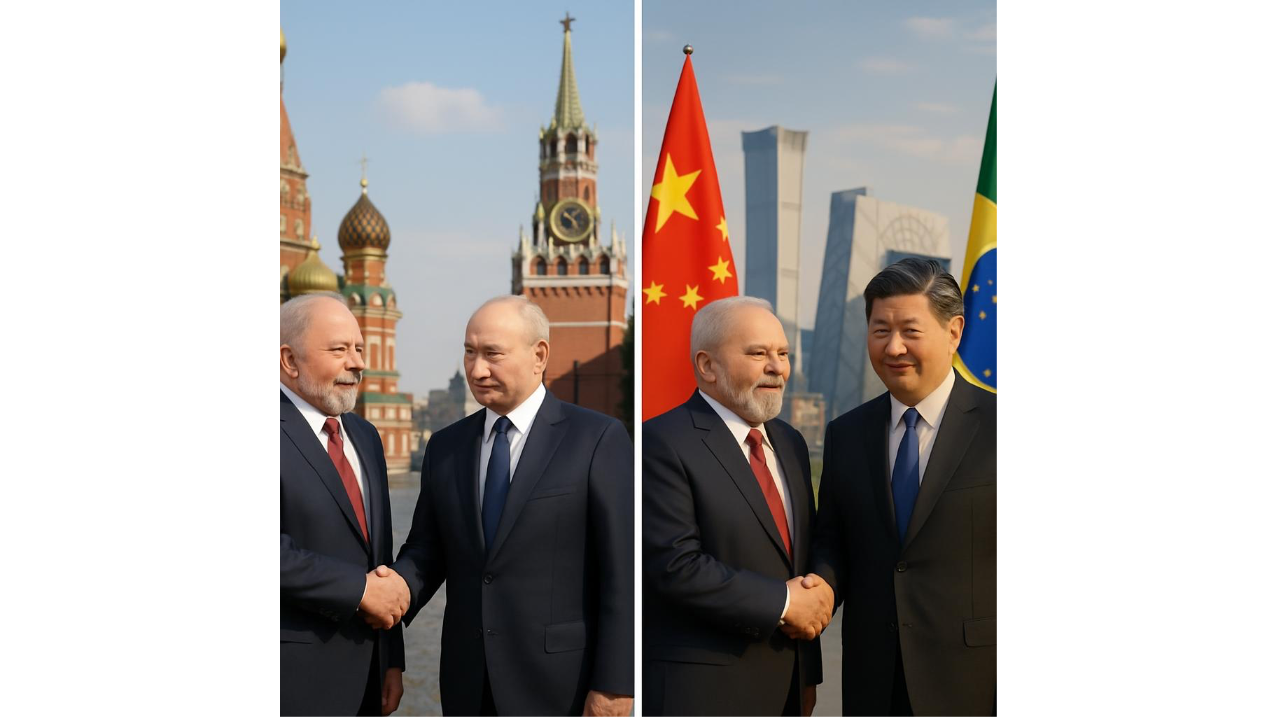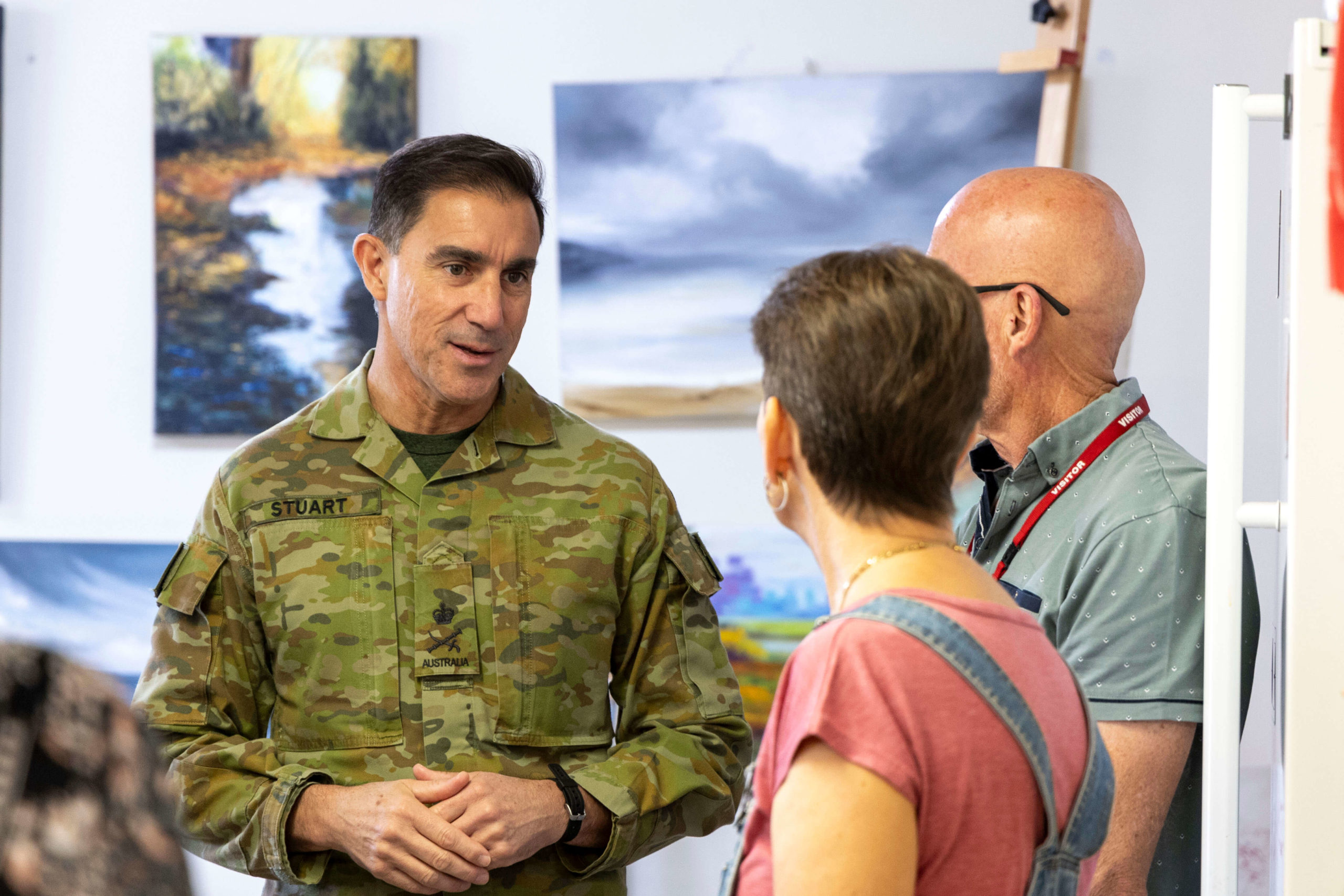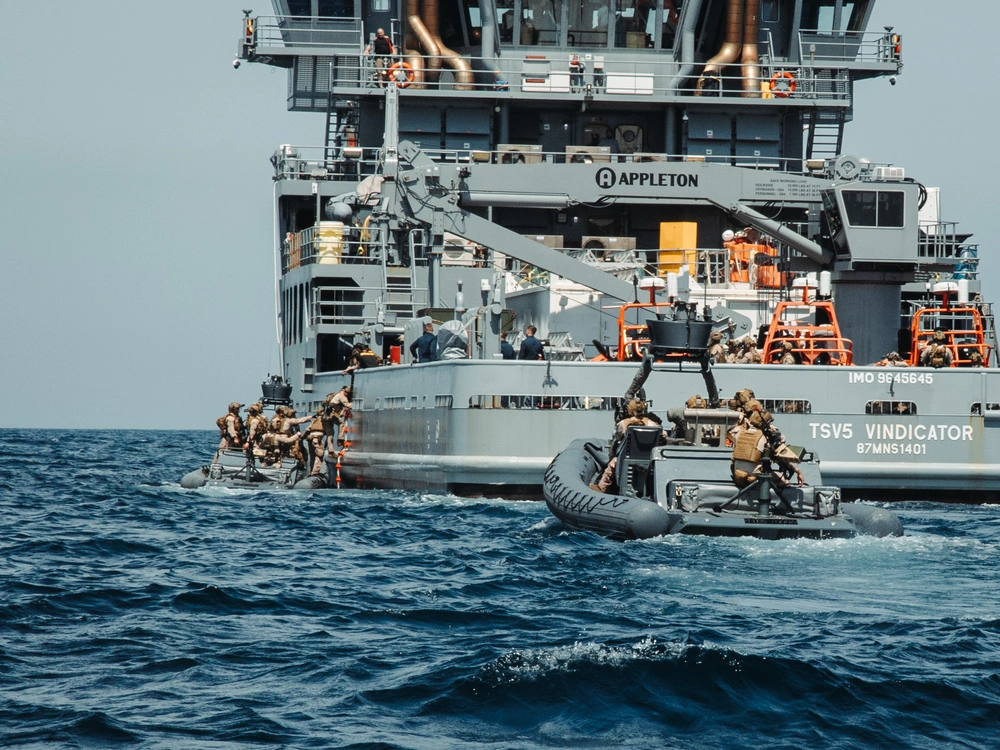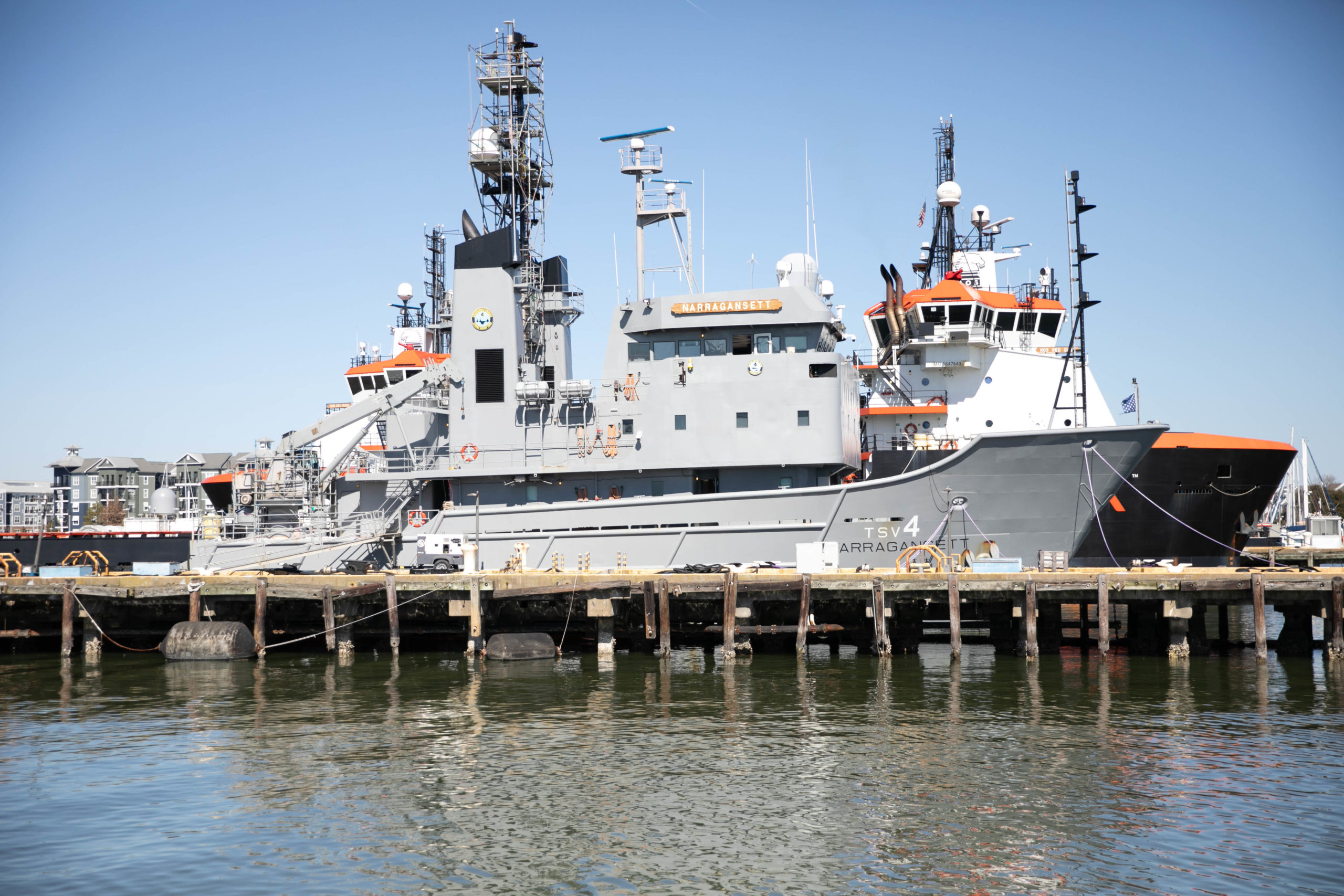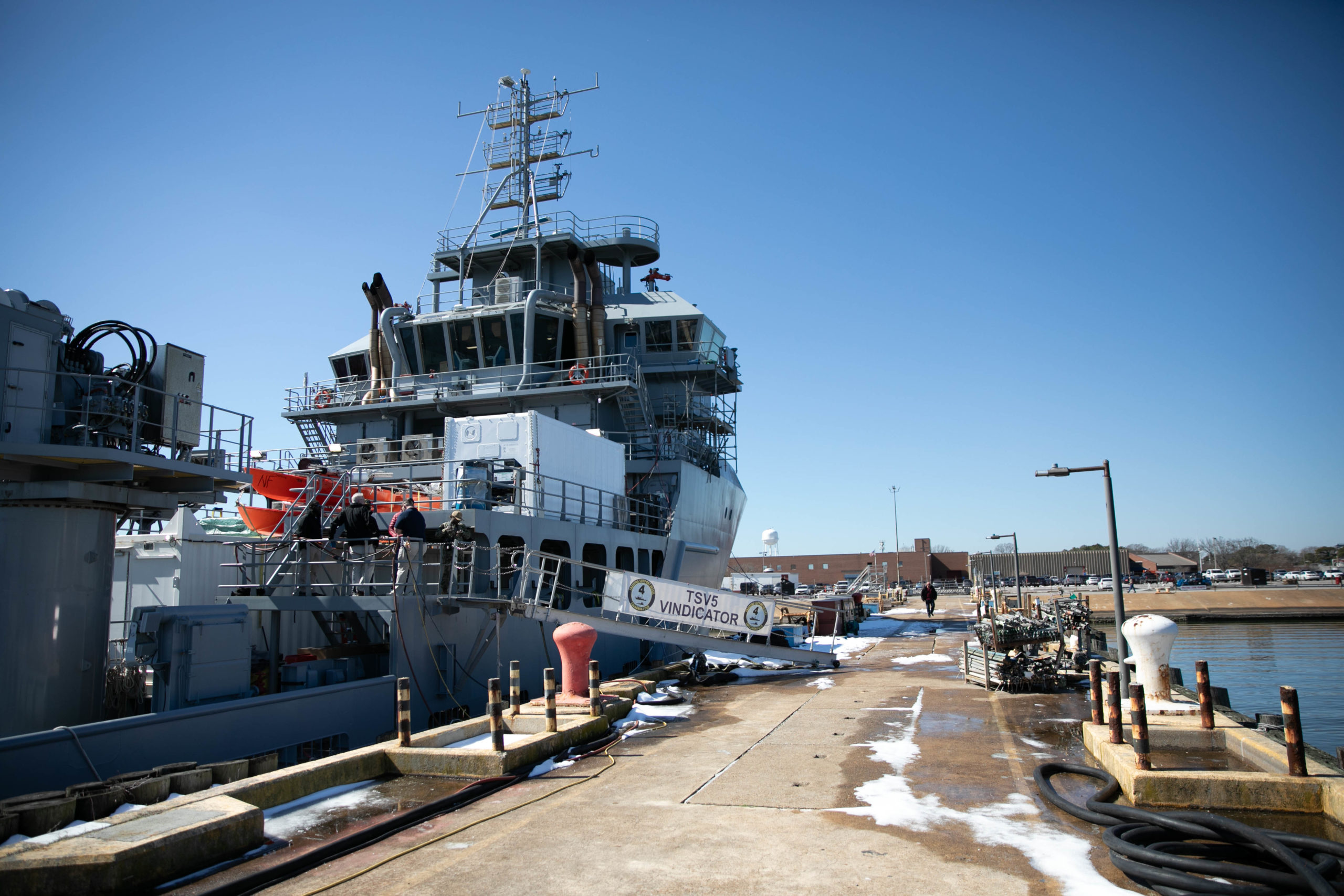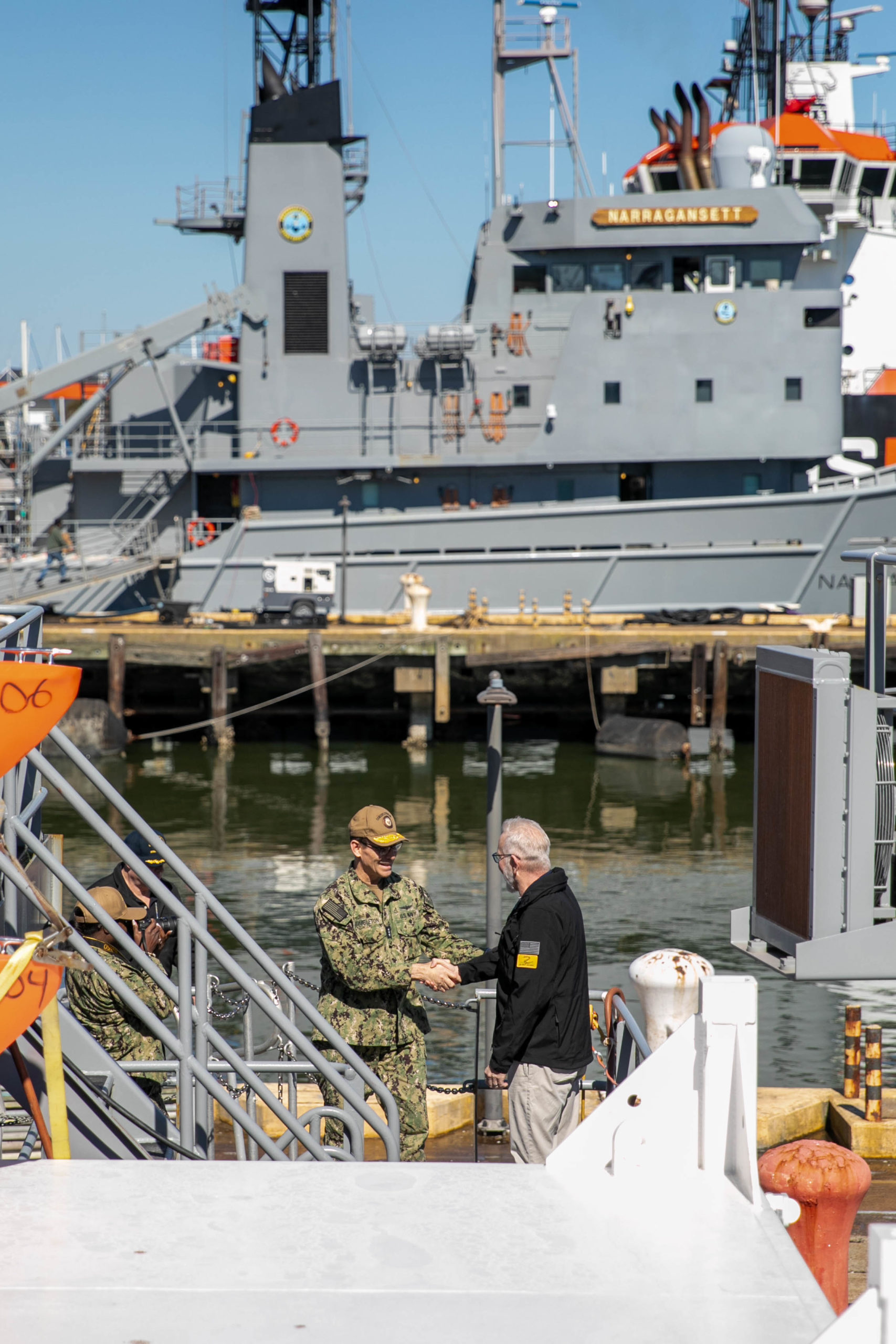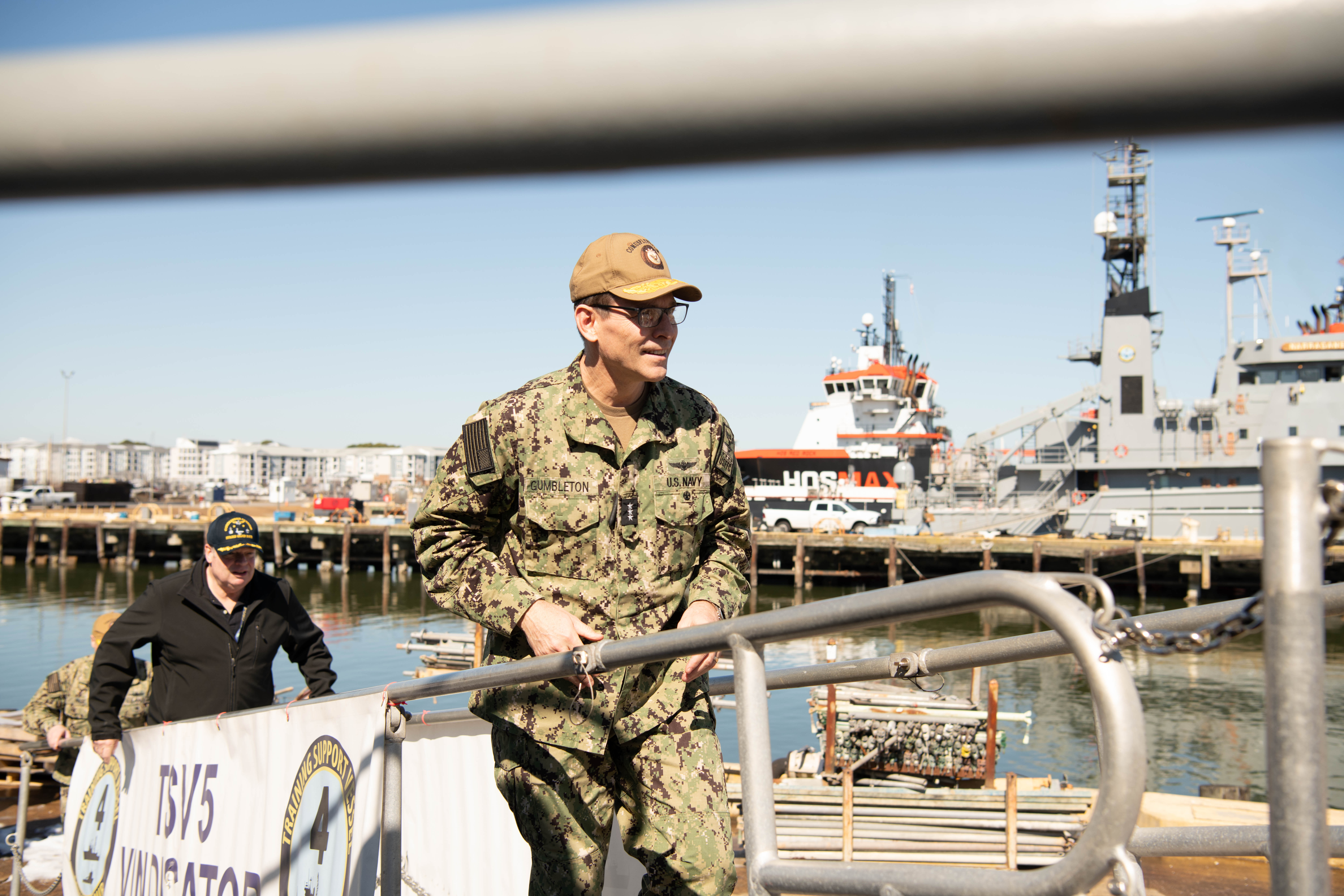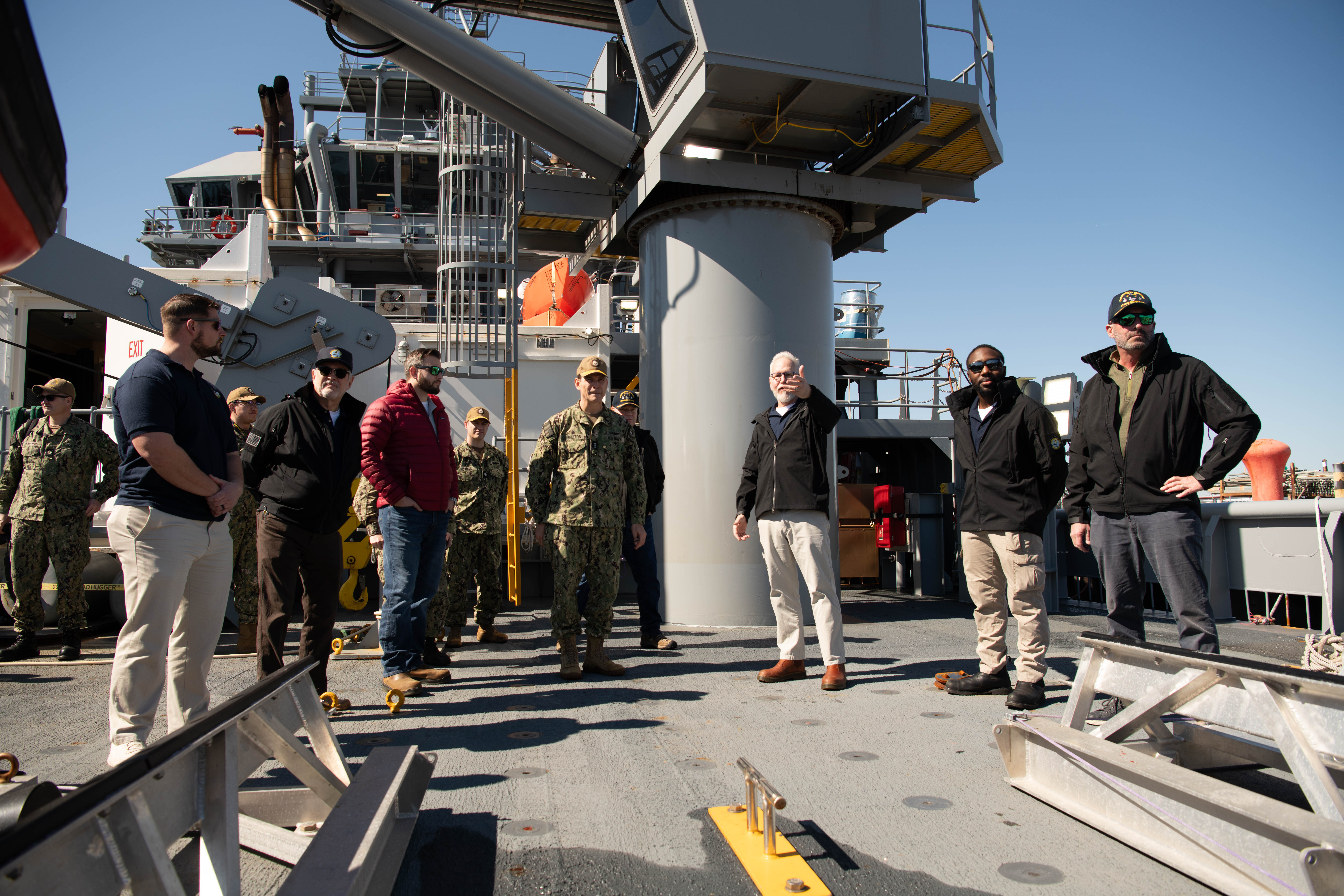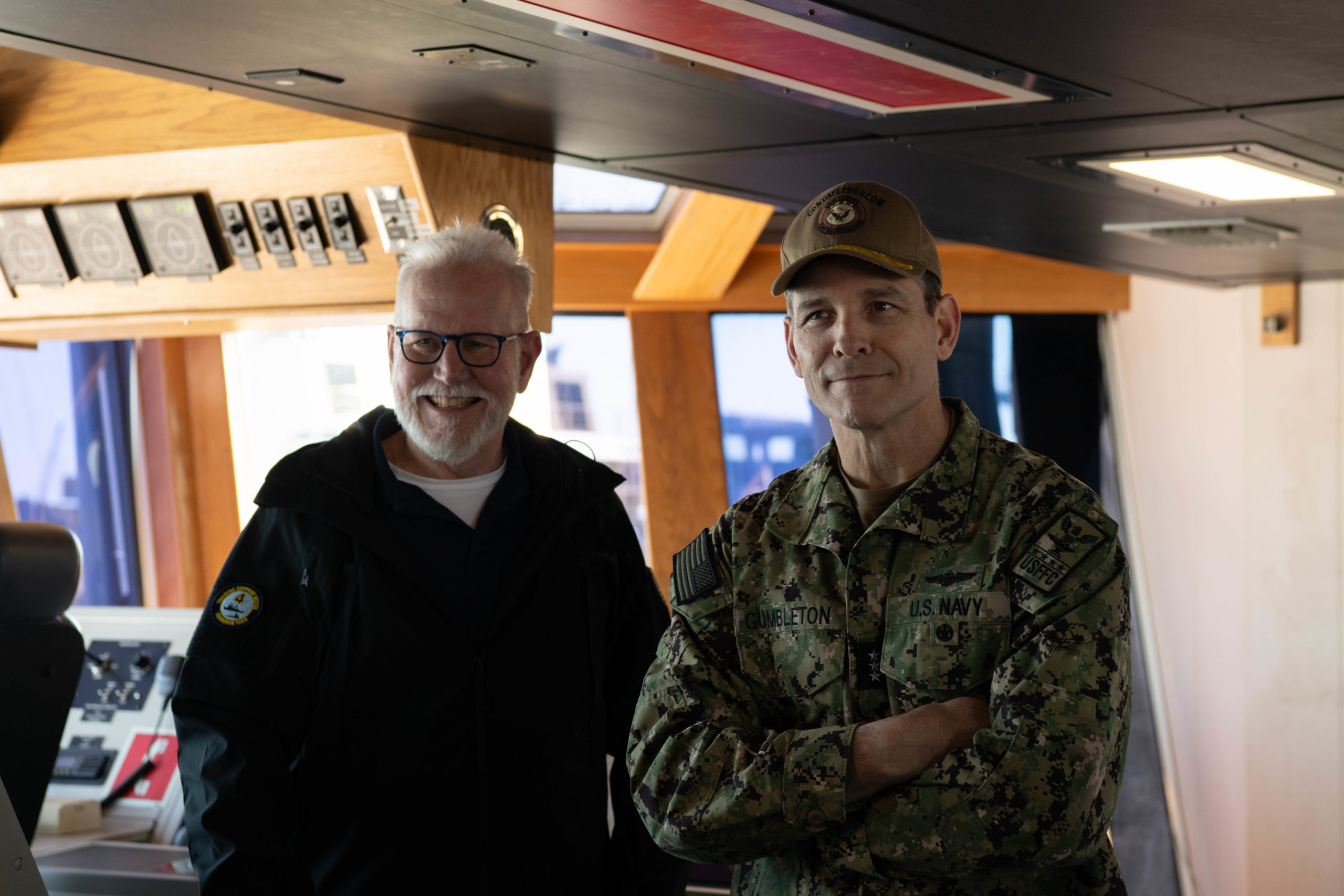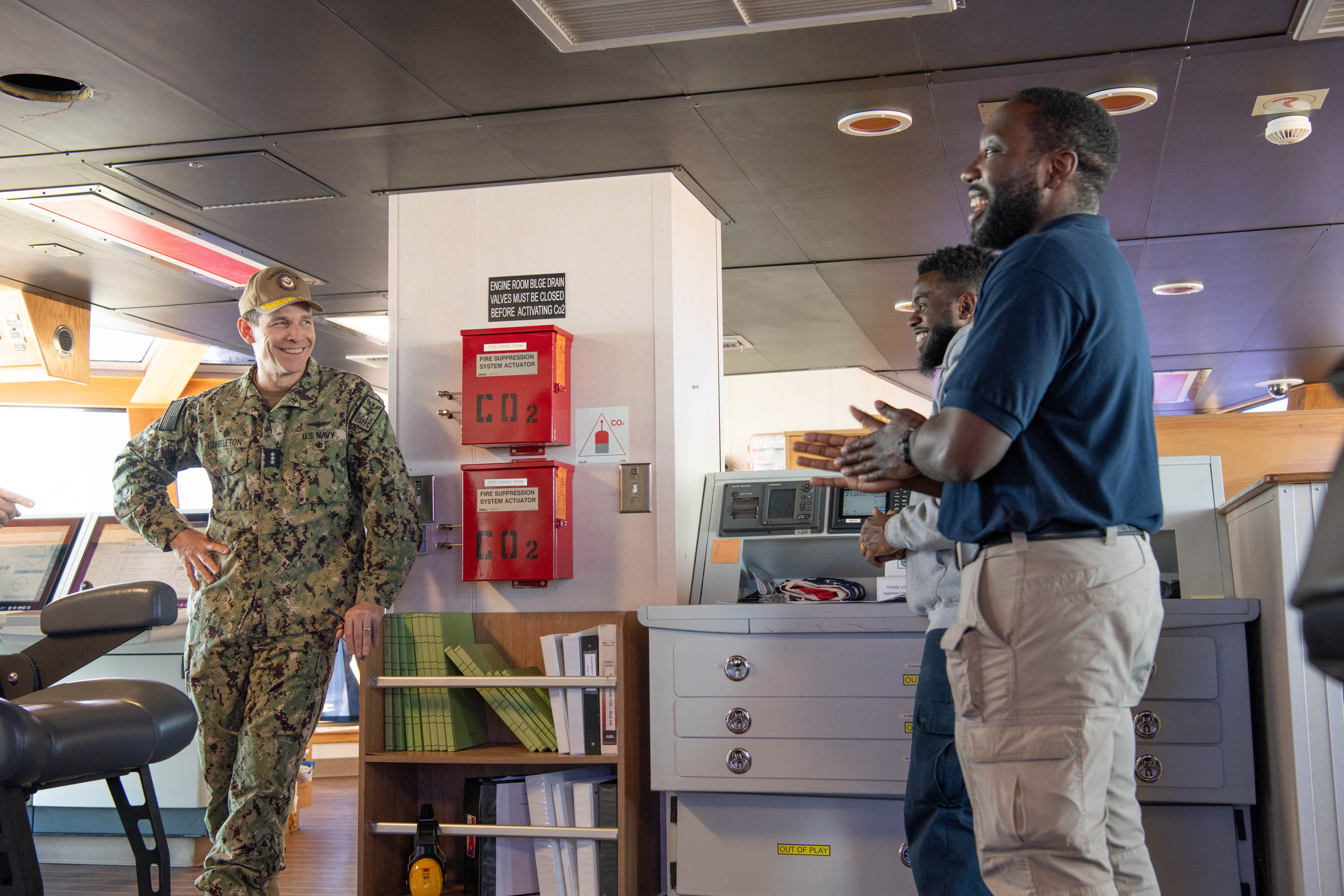By Petty Officer 2nd Class Chelsea Palmer
When you combine mission focus, teamwork, technical expertise, and creativity, the results are remarkable if not predictable. Training Support Vessel Squadron (TSVRON) 4 is no exception.
The 70-person team comprised of four training support vessels operating under the umbrella of Carrier Strike Group (CSG) 4 is one of the most visible and impactful organizations on Atlantic coast. However, very few know the remarkable story or the team of veterans and civilian mariners that bring it to life.
“TSVRON 4 is a tremendous asset for our warfighters,” said Rear Adm. Max “Pepper” McCoy, commander, Carrier Strike Group 4. “These ships provide a wide range of capabilities that enable the right balance of Live-Virtual-Constructive training in a complex, integrated at-sea environment for our naval and joint forces plus partners and allies.”
TSVRON 4’s training mission includes exercise mine-laying and recovery, maritime interdiction operations training, and live-fire event support. They also team with Naval Air Systems Command’s Atlantic Targets and Marine Operations (ATMO) to deliver targets, and to expand Fleet opportunities for unmanned systems training and Live, Virtual, and Constructive (LVC) training.
“Our TSVRON team is comprised of 100 percent civilian personnel who are passionate, mission-focused and dedicated to ensuring our warfighters receive the best training opportunities available. They are our greatest asset,” said Gil Birklund, the executive director of CSG-4 who oversees TSVRON 4 operations and maintenance. “Like many organizations, balancing limited resources and maintenance for ships to meet an ever-increasing demand signal for training is difficult. However, our people are the professional difference makers who work through them to meet training objectives safely every day.”
So how did a single boat from U.S. Fleet Forces Command and Carrier Group 4, a predecessor to Strike Force Training Atlantic now CSG-4, become a multi-platform squadron that provides training opportunities to the Fleet from basic through integrated phase?
Theirs is a story of teamwork and innovation focused on achieving the mission with a steady eye on emerging Fleet training demands. From the delivery of a Mobile Sea Range Program decades before, TSVRON delivers expanded training capability and readiness to the Navy and Marine Corps team today.
Humble Beginnings & Steady Progress
“At that time they [Cmdr. Mike Hull, Fleet Forces N7 staff, and Capt. Mark Noll, CARGRU 4 N7] sat down and said, let’s put this together. So they spoke with Rear Adm. Lindell Rutherford [then-Commander, CARGRU 4] and his successor to help arrange to get the Prevail – a surplus T-AGOS 8 asset that was being made ready for disposal,” said Wayne Gittelman, TSVRON 4 Program Manager.
“They got the Prevail and took it to Colonnas Shipyard under a SUP SHIP [Supervisor of Shipbuilding] contract and decided to build it out with all kinds of electronic components on it to make the range work.”
To make early strides in what became the Mobile Sea Range Program, CARGRU 4 intervened to divert then-CWO3 Gittelman from his orders to CARGRU 8 to bring him onto their team. Since retiring from service in uniform, Gittelman continue to serve as the Mobile Sea Range Program Manager.
After arriving at CARGRU 4, CWO3 Gittelman and team quickly learned that having a boat in the shipyard was vastly different than having personnel with the experience and expertise to fully realize the concept.
In 2005, Fleet Forces Command formally directed Strike Force Training Atlantic (SFTL), the successor to Carrier Group 4, to establish the Mobile Sea Range Program. To do this they brought together all of the training support vessels (TSV) then-operated by Norfolk Naval Shipyard and NAVAIR under one unique team. Beginning with Prevail (TSV 1), the program grew in capacity to four ships – Prevail, Hugo (TSV 2), Hunter (TSV 3), and Narragansett (TSV 4).
TSVs are formidable multi-role, multi-mission platforms. Based on each TSV’s original specifications, they developed unique capabilities used to meet training requirements. Their versatility is what makes them uniquely suited to support training throughout the East Coast’s Fleet Response Training Plan (FRTP), from basic phase training through high-end warfighting.
For example, TSVs provide effective support for basic phase training events, Helicopter Sea Combat (HSC) live-fire events, HSC Weapons School training, exercises in support of II Marine Expeditionary Force’s Expeditionary Operations Training Group (EOTG), as well as high-end fight training exercises such as Amphibious Ready Group / Marine Expeditionary Unit Exercises (ARGMEUEX), Group Sails, and Carrier Strike Group Composite Training Unit Exercises (COMPTUEX), the Joint Force’s most complex training event.
“While we are fundamentally part of CSG-4 and support integrated phase training events, the reality is that nearly fifty percent of the work our team does is outside of CSG-4 exercises,” said Gittelman. “The FFAECC [Fleet Forces Atlantic Exercise Coordination Center] prioritizes our schedule, and that’s a good thing. We have a significant demand signal for training support that exceeds capacity, and having Fleet prioritization is important.”
In 2015, the Mobile Sea Range Program was renamed to its name today – Training Support Vessel Squadron (TSVRON) 4.
A Winning Team – TSVRON 4 and ATMO
A key element of TSVRON 4’s success and ability to adapt to emerging requirements is its enduring relationship with NAVAIR’s ATMO team. Both bring unique capabilities on the foundation of a mission-focused culture. An outside observer would not be able to point out ATMO or TSV mariners supporting a common mission.
“While it rarely happens within our day-to-day operations, I often have to remind people who aren’t familiar with the history of our work with ATMO that we aren’t in each other’s chain of command,” said Gittelman. “Our relationship is just that – an important, mutually beneficial partnership that supports Fleet training and force generation.”
ATMO supports Fleet training with TSVRON 4 in many ways.
For example, they support each of CSG-4’s Force Protection exercises on the East Coast. In these events, ATMO small boat operations deliver multiple presentations to shipboard teams that drive the ship’s force protection team to practice their pre-planned responses and activate defense countermeasures.
During many of CSG-4’s COMPTUEXs, ATMO provides service from the TSVs, as well as on land-based detachments. Just a few of the events ATMO directly supports in COMPTUEX include strait transits, counter-piracy training, live fire gunnery exercises, and unmanned surface vessel operations.
ATMO also supports multiple helicopter squadron training events from the TSV within exercises including crew-served weapons training, as well as the use of guided and unguided missiles at stationery targets or unmanned high-speed maneuvering surface targets (HSMST) towing a target.
A Steady Eye Toward the Future
In 2024, Vindicator (TSV 5) became the latest addition to the TSVRON 4 team, replacing Hugo (TSV 2).
The addition of Vindicator brought with it enhanced capabilities such as endurance, a larger mission deck to hold more HSMSTs, capability to support Helicopter Visit, Board, Search, and Seizure (HVBSS) operations, dynamic positioning capability, portable accommodations for larger detachments, and increased on-station time.
“Our job here at TSVRON 4 isn’t to dictate what the customer wants,” said Gittelman. “Since day one, our job was to take leadership demand signal for Fleet training requirements – the what – and to figure out the how. The amazing part about our team is the number of people we have that can figure just about anything out if they have the time and resources – it’s core to the culture that we’ve built here over time.”
It didn’t take long to take advantage of Vindicator’s new capabilities. She completed support to her first HVBSS training mission during the Iwo Jima Amphibious Ready Group (ARG) 22nd Marine Expeditionary Unit (MEU) (Special Operations Capable) ARGMEU Exercise on May 18, 2025.
“I think the future of the TSVs is with larger vessels like the Vindicator which provide greater capability and capacity,” said Michael Schoeller, master of Vindicator and former master of Narragansett (TSV 4), whose desire to drive ships steered him toward TSVRON 4 in 2018.
Schoeller has a background in oceanography and marine research as a master of vessels from the Harbor Branch Oceanographic Institution and Bermuda Institute of Ocean Sciences, and before that, he wore a Navy uniform as a Quartermaster, Boatswain’s Mate, and a Signalman.
TSVRON 4 will continue to deliver increased readiness and warfighting capability to the fleet, while rapidly innovating to meet numbered fleet commander requirements. And while TSVRON’s decades of service to the Fleet are often seen and heard if not recognized, many on the team are happy to keep it that way.
“For me it’s all about the people we have within our team. We don’t have PRDs (rotation dates), and our team has a tendency to make a career out of being here. We lose more people from getting older and not being able to get out to sea for stretches of time as much as we do anything else. We’re the unknown asset that everybody knows – and that’s not a bad thing,” said Gittelman.
This article was first published on DVIDS on May 29, 2025.
Featured image: Photo By Sgt. Tanner Bernat | U.S. Marines with Maritime Special Purpose Force, 22nd Marine Expeditionary Unit, board a vessel in rigid-hull inflatable boats while conducting maritime interception operations aboard U.S. Navy training support vessel USNS Vindicator (TSV5) in support of Iwo Jima Amphibious Ready Group Marine Expeditionary Unit Exercise (ARGMEUEX) while underway in the Atlantic Ocean, May 18, 2025.
During ARGMEUEX, the 22nd MEU, aboard IWO ARG shipping, conducts various mission essential tasks that enhance operational readiness and lethality as a unified IWOARG/22 MEU team. (U.S. Marine Corps photo by Sgt. Tanner Bernat)
The images below in the slide show:
VIRGINIA BEACH, Va. (Feb. 24, 2025) – Master of Training Support Vessel (TSV) 5 Vindicator Mike Schoeller, right with hand raised, discusses the ship’s capabilities and TSV operations with Vice Adm. John Gumbleton, commander, Task Force 80 and deputy commander, U.S. Fleet Forces Command, fourth from left, during a fleet visit to Vindicator (TSV 5), assigned to Training Support Vessel Squadron (TSVRON) 4, at Naval Amphibious Base Little Creek, Va., Feb. 24, 2025.
TSVRON 4 is an element of Carrier Strike Group (CSG) 4 that delivers training opportunities and supports CSG, amphibious ready group, and independent deployer preparation for global combat against peer competitors.
The squadron delivers support to all CSG-4 integrated, at-sea training events and scheduled training in basic and advanced phase training through the Fleet Forces Atlantic Exercise Coordination Center. TSVRON 4 works closely with NAVAIR’s Atlantic Targets and Marine Operations (ATMO) for aerial and seaborne target engagements.
TSVRON 4 functions as a Mobile Sea Range and integrates the Navy’s Continuous Training Environment and enables Live, Virtual, and Constructive (LVC) training while also delivering opportunities for other training such as live fire exercises, unmanned system launches and recoveries, mine laying operations, maritime interdiction operations, and visit, board, search, and seizure (VBSS) training.
(U.S. Navy photo by Mass Communication Specialist 2nd Class Chelsea Palmer / released)


